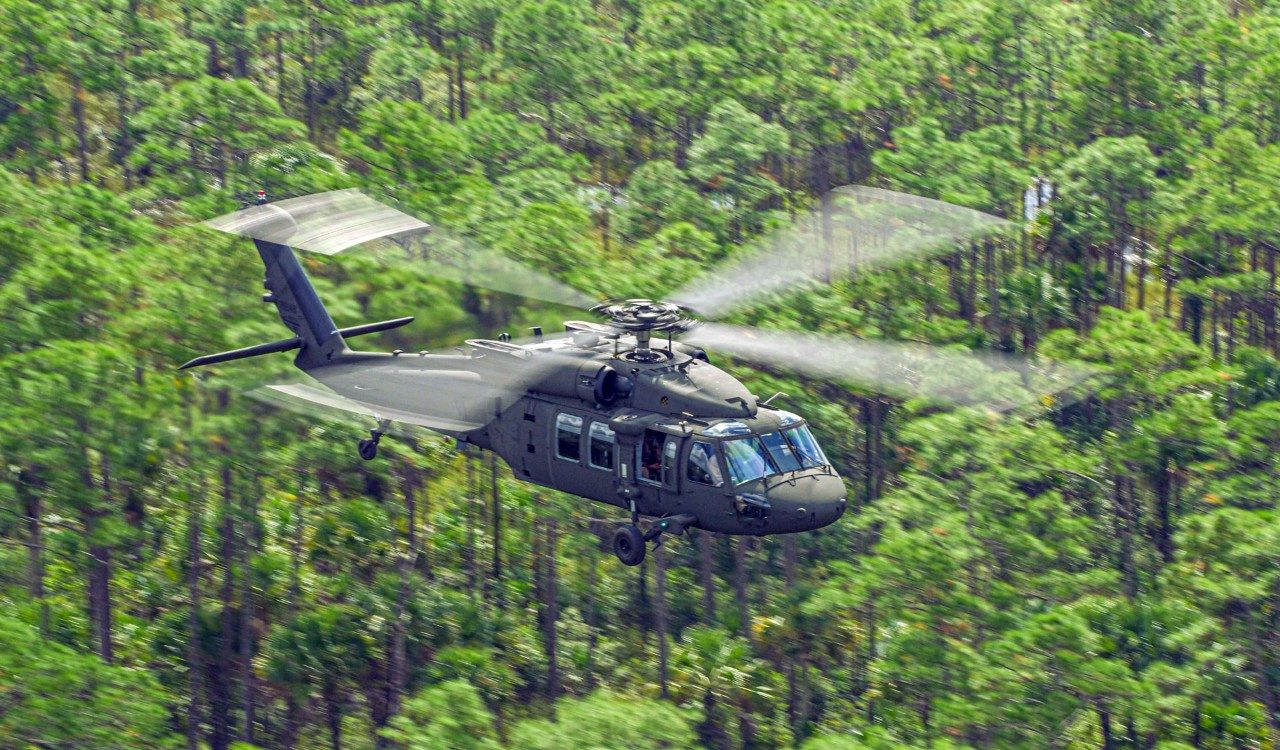The Time is Now to Modernize the Army’s Black Hawk Helicopter
As the Army looks to the future, it’s confronting a complex set of missions and adversaries. In tomorrow’s fight, it must be ready to operate over larger expanses of land and water, fight in an all-domain environment, and counter increasingly sophisticated threats.
The versatile UH-60M Black Hawk® helicopter – the cornerstone of Army Aviation – will be critical to tomorrow’s global operations. By taking low-risk and cost-effective steps to modernize Black Hawk aircraft now, the Army can keep Soldiers ready for what’s next in the decades to come.
Every Soldier knows the familiar outline of a Black Hawk helicopter in the sky. It means everything from reinforcements and fresh supplies to medevac and humanitarian relief. With more than 2,100 in active Army service, these do-it-all aircraft are rugged, reliable, and proven.
The UH-60M’s versatility means the Army can make critical upgrades quickly and cost-effectively, delivering new capabilities for the Soldier sooner while ensuring a high return on investment for the taxpayer. Sikorsky is already investing in concepts and early designs to help jump-start development and integration efforts.
By implementing a concrete modernization plan now, the Army and Congress can pave the way for a more powerful, more digital, and more connected Black Hawk helicopter that will give ground commanders a decisive advantage in the future fight.

The versatile UH-60M Black Hawk® helicopter – the cornerstone of Army Aviation
More Payload at Range for the Division Commander
In areas like the Indo-Pacific, with far-flung islands and varying terrain, Division commanders will rely on the Black Hawk helicopter to move Soldiers and supplies quickly and safely across long distances.
The UH-60M’s new Improved Turbine Engine (ITE) will give the Division commander more options for planning and executing air assault missions. It will deliver more power and better fuel-efficiency, so the aircraft can fly further and carry more payload on a single tank of gas.
Those are high-value capabilities that Army Divisions need, implemented in a cost-effective way that won’t require expensive re-engineering. Sikorsky is taking full advantage of data and insights from integrating the ITE with its Future Attack Reconnaissance Aircraft (FARA) prototype, which will help speed and simplify integration with the Black Hawk aircraft.
And with the ITE slated for multiple aviation platforms, this integration gives the Army a chance to fly the engine on a fielded aircraft, gaining insight and reducing risk for programs like Future Vertical Lift.
Networked Front-Line Reconnaissance
Advanced threats call for advanced sensors that can serve as the Division commander’s eyes and ears. The Army plans to have low-cost, lightweight Launched Effects (LE) drones fly in swarms and feed critical intelligence to joint forces. These drones are highly capable but have limited range, and need a forward-deployed helicopter to both launch and control them.
The Black Hawk helicopter could – with a few straightforward upgrades – launch and control LE drones, offering Divisions more options and more flexibility for reconnaissance. That would complement existing LE capabilities on Apache helicopters.
The Army and Sikorsky have already experimented with equipping Black Hawk aircraft with LE drones, and Sikorsky has experience installing proven pylons and fire control systems on other Black Hawk variants that could help speed the integration of LEs on the UH-60M. This is another opportunity to apply investments from FARA to deliver advanced capabilities sooner.
A Rapid Path to a Digital Black Hawk
Technology moves fast, and the Army needs affordable ways to keep legacy aircraft up to date with the latest innovations. That’s why the Army’s Modular Open Systems Approach (MOSA) strategy is so important. MOSA creates a standardized, digital backbone for electronics like sensors, radios, and avionics, so those components can be easily upgraded over time.
Sikorsky has developed an initial version of a digital backbone kit for the UH-60M, one that would deliver many of the benefits of MOSA without the cost of a major overhaul of the helicopter’s architecture. Known as the Scalable Digital Backbone, this kit can digitize the aircraft quickly and efficiently, and greatly reduce the cost and timeline for future upgrades.
Digital innovations also open the door for smarter, cheaper maintenance. A new Sustainment Digital Twin, in development by Sikorsky, gives maintainers a better view into the health and status of the aircraft, so they can optimize maintenance schedules, predict issues before they happen, and ensure parts are stocked when and where they are needed. That improves safety and mission readiness while reducing costly downtime and unscheduled maintenance.
An Enduring Investment with Lasting Value
Soldiers will rely on Black Hawk helicopters until the 2070s, and upgrades to the aircraft today will pay dividends for decades. These improvements take advantage of previous Army investments in FARA to speed new capabilities, while also reducing risk for Future Vertical Lift programs by deploying next-generation capabilities on a fielded platform.
By implementing these upgrades now, the Army and Congress can develop the critical capabilities – payload at range, networked reconnaissance, and digitization – that Division commanders need to deter near-peer threats now and in the future.
Black Hawk® is a registered trademark of Lockheed Martin Corporation, including its subsidiaries and affiliates.




